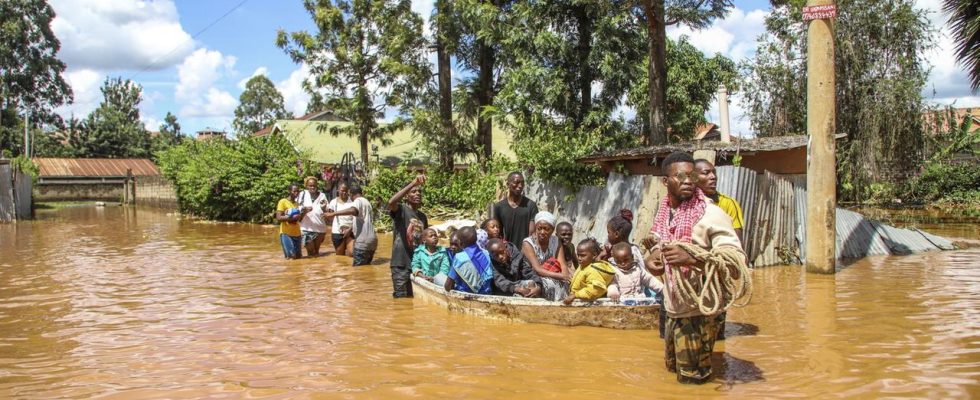After heavy rainfall in Kenya, around half of the country is affected by flooding. This hits hardest those who already have little. Many people in the slums in Nairobi have lost everything.
Some young men are sitting on a wall at the side of the road. But the road is no longer there. Now there is a raging river there. Red-brown masses of water rush past, colored by earth that is being carried away. This is what it looks like in Kariobangi, a slum in northeast Nairobi.
The large slum area of Mathare, where an estimated half a million people live, is also largely under water. Videos on social networks show how residents carefully climb over the roofs of the tightly packed corrugated iron huts. Everything underneath is under water.
People rescue their belongings after heavy rains in Nairobi’s Mathare slums.
Schools as emergency shelters
Red Cross helpers managed to save several dozen people from drowning. Many only have their lives there. They have lost everything else. Some who have become homeless have found shelter in schools. It’s the holidays in Kenya right now, but school is supposed to start again on Monday.
The floods hit the slums particularly hard because some of them are located a little deeper, in depressions, and the slums are usually not fortified. Streets and paths are usually made of rammed earth. In addition, many of these neighborhoods are very densely populated – which is why floods affect a particularly large number of people here.
About half of the country affected
Hundreds of people have died in flood areas in Kenya and Tanzania so far. Tens of thousands have lost their homes. Many roads and bridges are flooded and can hardly or no longer be used at the moment. Cars and buses get stuck in the water. Large trees break off because the leaves are too heavy due to the constant rain – or they fall over because the roots can no longer find support in the soggy ground.
The Kenyan government has set up a crisis center and urged people in vulnerable regions to move to higher ground if possible. A good half of the country is affected by the heavy rains. Kenyan Vice President Rigathi Gachagua promised quick help. “We will use all resources, both monetary and humanitarian, to ensure that no lives are lost and to protect the people of Kenya from this disaster.”
El Niño weather phenomenon jointly responsible
There have been repeated heavy rains in East Africa for weeks. The El Niño weather phenomenon has transitioned into the rainy season, which began at the end of March. Some scientists believe that the severity is also a result of climate change. There is no all-clear for now: further heavy rain showers are expected at least until Sunday.
Karin Bensch, ARD Nairobi, tagesschau, April 27, 2024 9:29 a.m

